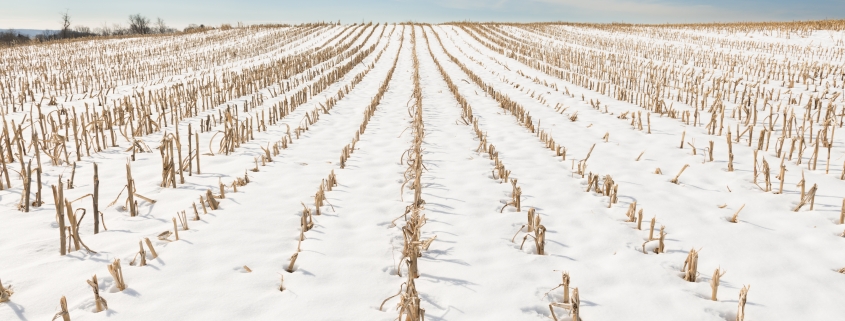IP Crop Network, February Report
This monthly feature from SSGA’s Agronomy Action Team highlights growing conditions for Identity Preserved crops from different regions around the country. Thanks to the states/regions that contributed this month. If you would like to contribute, please get in touch with David Kee or Shane Frederick. You should also follow David Kee on Twitter for some of the latest, most-interesting information on agronomy and research that affect IP and other farmers.
Illinois
Most of Illinois has received adequate rainfall over the winter with soil profiles pretty well full of moisture. I finally saw puddles forming in fields again around mid-January. There are a few drier pockets to the north and central Illinois, but overall, it’s in pretty good shape.
Growers are paying close attention to the December futures prices as crop insurance prices are being set here in February. The volatility factor that the RMA uses to set premium costs has been relatively low ,and it looks like premiums could be down $3-6/acre depending on the scenario and coverage chosen.
Fertilizer prices continue on a downward trend. This is great news except for the guys that prepaid last fall at higher prices.
The Illinois winter wheat crop is looking good and has improved over the winter. Although planted into very dry conditions which led to delayed emergence, the resiliency of this crop is amazing. The moderate winter temps have allowed for growth through most of the winter and the crop has caught up and is pretty close to average from a growth stage perspective for this time of year. A lot of growers took advantage of the frozen ground over the last two weeks and have made the initial nitrogen applications with more to come in late March/April.
Planting intentions for the 2023 planting season seem to be favoring corn on a few mores acres than last year. The true test will be when we can head to the field. The earlier the spring, the more corn acres.
— Scott Eversgerd, Field Agronomist, Southern Illinois, Pioneer Hi-Bred International
Minnesota
Minnesota is snow covered and dry! There has been some snow melt, but the blanket of snow persists. According to the Feb. 9 drought monitor report, about 60% of the state is rated abnormally dry to severe drought (D0-D2). Of more concern, about 37% of the state is rated moderate to severe drought (D1-D2). For early January to early February, mid to southern Minnesota soil temperatures, at the 4-inch depth, have been hovering between 28 and 32 degrees. If the snow melt becomes mainly surface runoff, planting 2023 could prove to be interesting. A lot depends on spring thaw, the runoff/infiltration ratio, and future weather events.
Farmers are working with their advisers, finalizing plans for planting 2023, arranging input delivery, etc. The farmers I have talked with are not planning to significantly change their crop rotation. However, this decision is not set in stone. Much depends on spring weather and the replant decisions that may, or may not, be required of them.
— David Kee, Director of Research, Minnesota Soybean Research & Promotion Council
Missouri
Like most of the Midwest, Missouri has been subject to an unseasonably warm and dry winter thus far. More than 50% of the state is categorized as abnormally dry or in a moderate drought. Extension specialists across the state are preparing farmers that a continuation of the warm trend could result in increased disease and insect pressure for the upcoming growing season. Results of the 2022 harvest showed a slight decline in average soybean and corn yields across the state likely due to scattered drought pockets during the growing season. We aren’t projecting any significant changes in planting acreage for 2023.
Some fertilizer prices are beginning to mellow, and supply has been reported to be sufficient. Low natural gas prices will hopefully continue to bring fertilizer prices down to a more manageable price point. It will be important that the river systems are replenished with rain to allow for transport going into the spring.
— Eric Oseland, Director of Agronomy and Research, Missouri Soybeans







Leave a Reply
Want to join the discussion?Feel free to contribute!